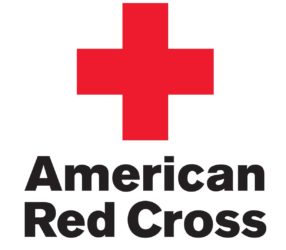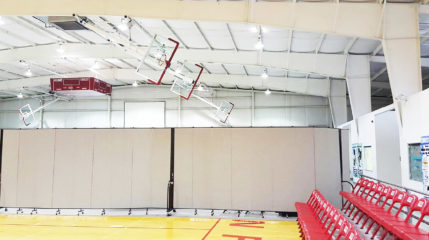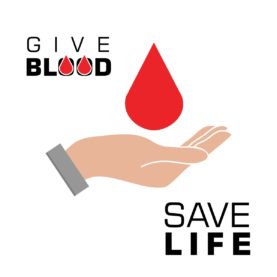4 Steps to Coordinate a Blood Drive
Market: Healthcare
What is a blood drive?
Blood drives are a charitable event in which groups of people donate their blood for others in need. These can occur for an emergency crisis, or to maintain the supplies as a preventative measure. Medical professionals are continually looking for new donors to keep up with international-wide accidents occurring daily. Why do doctors need donated blood? According to givingblood.org, approximately 43,000 pints of blood are used for patients each day in the United States and Canada, and 4.5 Million Americans would die each year without blood transfusions. For most healthcare emergencies, blood is essential.
Typically, these drives are hosted in various types of facilities and always seem to be on the go. Since blood drives in the community appear in different places, blood banks are regularly looking for new hosts. Here are four steps for a new host to prepare a successful community blood drive.
1) Choose your blood bank.
So you’ve decided to coordinate a community blood drive, or maybe are even just considering it. How to begin? The first step to running a blood drive is to pick your blood bank. A well-known, national blood bank/emergency assistance organization is the American Red Cross. On their website, they list a step by step process on how to run a blood drive through them. However, if you prefer to go local, many communities have smaller blood banks nearby that will work well too.
AABB.org is an excellent resource to look at to decipher what is or isn’t a blood bank. There is a form on their website that searches for all local blood centers in your area when you type in your zip code. Once you ultimately pick your blood bank, reach out to one of their representatives, and set a date with them. They will be able to answer any additional questions you have. This process should begin about a month out from the drive itself.
2) Find location and equipment to use.
Most blood banks, whether national like the Red Cross or smaller local ones, will ask you to supply the space, and all that goes with it. A large open room, like a gymnasium or a cafeteria, is ideal for this situation. Schools, community centers, or sports complexes are some examples of useable facilities. The next important factor of the space is to make sure it is separate from other activities as well as a private area for donors to do their preliminary interview. In these interviews, the medical practitioners ask the donors about past medical history and other private information.
Blood banks also expect a blood drive host to bring other necessary equipment. While the blood bank will bring medical supplies, beds, etc., a host should have chairs at the ready, and also a few tables for check-in and refreshments. If you don’t have a private place for the event, or half of the gymnasium is in use for something else, create privacy with Standard Room Dividers by Screenflex. Using dividers allow for some other activities to carry on in the other part of the gym while keeping all of the donors contained to one area. Smaller screens can even seclude a private space for registration interviews. Since HIPAA regulations require health information to be confidential, providing a barrier for these interviews is significantly helpful. The partitions are also easily sanitized with an optional microbial coating and can be stored and reused for other drives in the future.

3) Schedule volunteers and at least 2 points of contact.
You’ve got your space booked and ready to go. Your date is set with plenty of time to prepare the rest. Now, you need volunteers to help run your event. If you are at a company, send a signup sheet around the office to ask for volunteers. If setting it up in a school, offer volunteer hours for the students’ extracurriculars. Not too many volunteers are needed, but there should be enough for each table. Typically, you want a couple of people at the welcome desk and the refreshments table. You also want to gather plenty of people so they can do their job assignments in shifts and always have someone at the various tables. The Red Cross, and possibly other blood banks as well typically ask for at least 2 points of contact. It is your job to appoint someone as your backup in case you can’t connect.
4) Publicize!
Now, you’ve got this great event for the community all set and ready to go. The remaining challenge? Getting donors to come to the blood drive. The number of donors that show up is where promotion and publicity come into play. If you have a great TV show with an excellent plot but no one knows it exists, do you think they will watch it? Of course not! The same applies to any event. For people to show up, they first need to know about it.
One way to publicize is to hand out flyers to potential donors around the facility or school and have each person tell their friends and family. Emphasize that it’s a great way to get out in the community and how rewarding it can be to save multiple lives in return. One pint of blood can save up to 3 lives, so every donation counts. Posting on social media can help get the word out as well. To help donors commit to their sessions, ask them to schedule a time on an online booking site. A popular signup website you could use for this purpose is SignUpGenius.com. Since some blood centers require at least 30 people scheduled to put on the drive, confirmation of your numbers is critical.
Blood Drives can be a great event for the community if put together correctly. While the blood bank you are working with will assist you further, taking these steps can help ensure a successful set up of the event. If other questions come up, your blood bank representatives can walk you through the step by step process.

